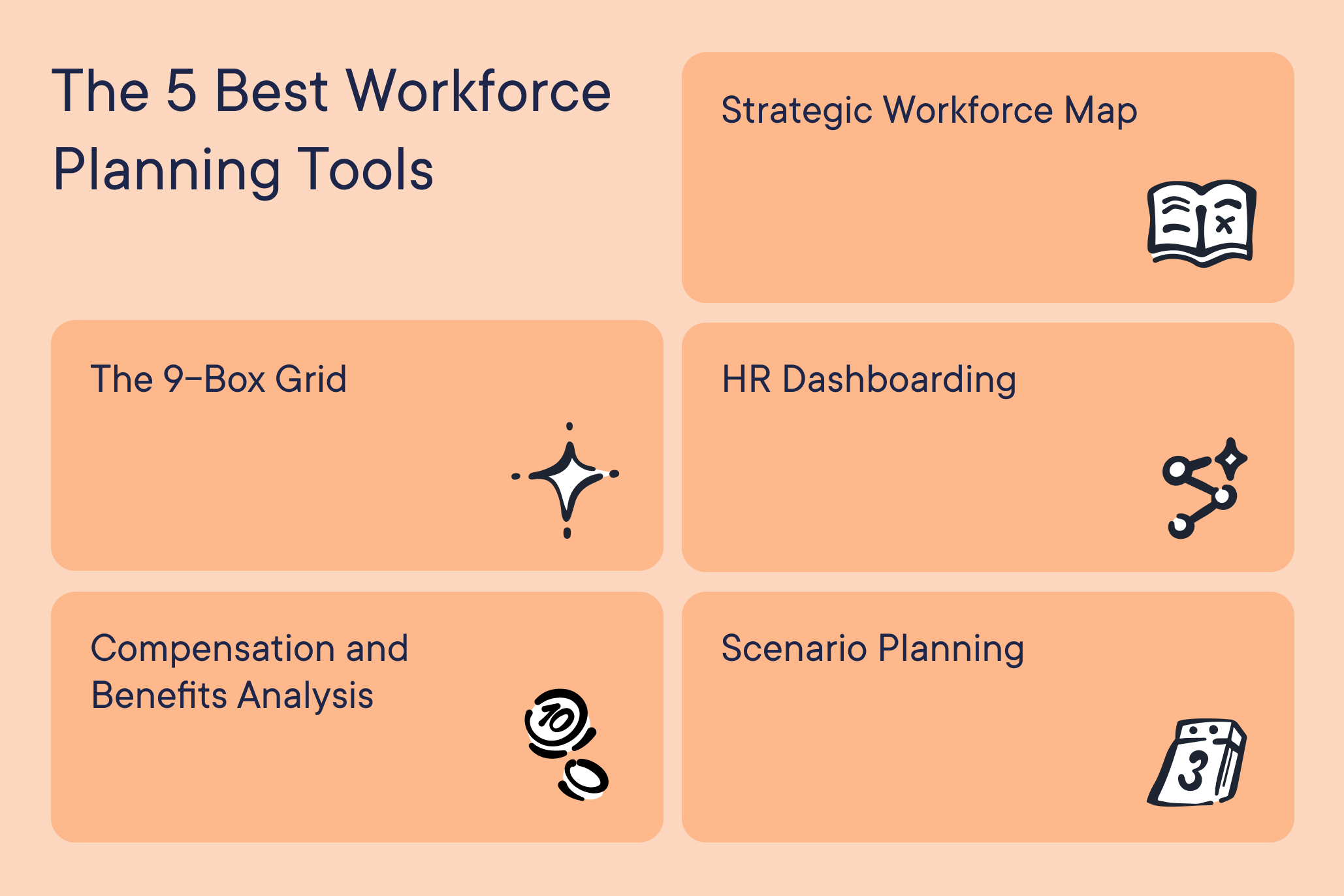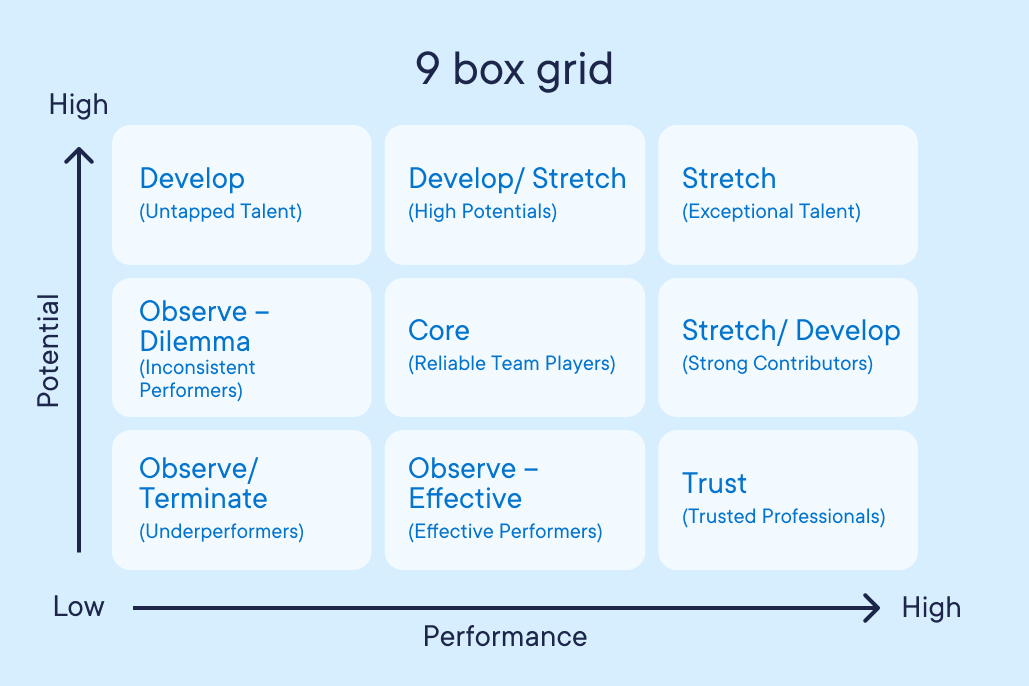
Compare Providers
Download our outplacement comparison sheet
Request Pricing
Compare our rates to other providers
Strategic workforce planning is an essential part of workforce management. This is why organizations are making the most of workforce planning tools to build an agile workforce, identify talent needs, close performance gaps, and make smarter business decisions to achieve organizational goals.
Not only can workforce planning tools help you get this process started by gathering and analyzing your current workforce data, they can also help you continuously monitor how your talent and business goals are progressing together. This is vital if you want your long-term workforce planning initiatives to thrive.
In this article, we will go over the five best workforce planning tools that your HR team should be using now, what they entail, and why they are so essential for your workforce planning efforts.
What Is a Workforce Planning Tool?
In short, workforce planning tools are simply ways to gather and synthesize data. They can be anything that helps you keep track of your massive amounts of talent information. This is vital for organizations to proactively plan and predict workforce needs, and then more efficiently devise and implement human resources strategies, which will help prevent future layoffs, panic hires, or understaffing challenges.
You can use these workforce planning tools to gather as much information about your current workforce as possible, and then compare that to your business goals in both the short term and long term. Strategic workforce planning usually covers a forecast period of around three to five years. The ultimate goal here is to improve current business practices by problem solving and predicting issues before they arise.

The 5 Best Workforce Planning Tools
While most organizations understand the need for strategic workforce planning, many experience barriers that make it difficult for HR departments to successfully implement it. Using the right set of workforce planning tools, however, can make it much easier for organizations to conduct their strategic workforce planning.
We’ve prepared a list of five best workforce planning tools and techniques that HR should be using. Let’s dig into each to explore why they are valuable and what they entail.
If you need additional guidance on implementing these workforce planning tools for your organization, you can also download our free comprehensive Careerminds workforce planning template below.
1. Strategic Workforce Map
Strategic workforce mapping is a way for businesses to understand their ultimate organizational goals and strategy. Organizations first need to identify business vision, mission, and goals, as well as the competitive landscape, to determine their organizational strategy for the next three to five years.
This means asking questions like:
- What are the current supply and demand trends?
- What products and services does your business provide?
- What is your competition doing and how can you outsmart/outperform them?
Then HR can develop a strategic workforce plan to align with those objectives and ensure that all HR policies—such as recruitment, performance management, rewards and promotions, etc.—will continue to follow that organizational strategy. This is a key workforce planning tool that HR professionals should be using and communicating clearly across the whole organization. Everyone within the company who contributes to the execution of these objectives should be aware of the organization’s short-term and long-term goals. This includes key stakeholders, executive leadership, managers, and all levels of employees.
2. The 9-Box Grid
This next workforce planning tool is also known as the performance-potential matrix. Once HR is able to map out a strategic workforce plan based on the business objectives and organizational strategy, the next step is to determine the core competencies and skill requirements that will drive the business toward those objectives.
This 9-box grid, or HR3P matrix, is designed to map out the current state of your workforce in terms of characteristics, capabilities, and distribution. The grid measures employees’ past performance (on the x-axis) against their future potential (on the y-axis). You can use this workforce planning tool to assess where each employee fits into the larger organizational strategy, and then track their progress as they improve over time.
3. HR Dashboarding
An HR dashboard is a workforce planning tool that tracks, analyzes, and reports on key HR metrics. This is a very effective instrument for mapping out current workforce capabilities to identify any gaps or future talent needs and track progress toward organizational goals.
This workforce planning tool is essentially a workforce database linked to all HRIS sources—including payroll, applicant tracking systems (ATS), and the 9-box grid we covered earlier—to collate all data on employee demographics, earnings, retention and distribution, turnover and recruitment, current competencies and performance, how employees are being recognized and rewarded, budget and market pressures, and even insight into competitors’ workforce management strategies. This HR dashboard and your analysis thereof can help further inform workforce shortages, gap-closing strategies, succession planning, and future talent needs to attain business goals.
This doesn’t have to mean developing an entire dashboard system for your company on your own. Workforce planning requires a lot of data. That’s why there are so many strategic workforce planning software options available for HR that can help you gather and set up your workforce analytics and reporting. You can also choose to go with a simpler, Excel-based spreadsheet system to get you started with this workforce planning tool.
4. Compensation and Benefits Analysis
Compiling this HR data and analytics can then help you calculate costs and link financial planning to your strategic workforce plan. This starts with a compensation and benefits analysis, which is an essential workforce planning tool for understanding what you pay for talent in your workforce and how that compares to the market as a whole.
This is especially helpful when used alongside the 9-box grid we covered earlier, to ensure that you’re compensating your employees appropriately for their effort and performance. You can further enrich this data with labor market statistics, using external or industry payment benchmarks to adjust for internal payment discrepancies.
The idea is to make sure that you’re not underpaying your top talent or overpaying your underperforming talent. Getting this wrong could mean losing your top talent to competitors and only retaining your lowest performers, stagnating your business performance. So it’s vital that you leverage internal HR analytics and external market data to determine necessary changes in your workforce planning around compensation and benefits, and how that pertains to talent development, hiring, and gap-closing strategies.
5. Scenario Planning
This external data can also be useful for projecting demand and anticipating future workforce needs or challenges. Scenario planning is the ultimate workforce planning tool used to predict and analyze potential future scenarios and how they might affect your workforce and business performance, so that you won’t be caught off guard.
HR will need to look at all of the gathered workforce data and analytics to not only identify areas that need to be improved, but also imagine potential future scenarios that could significantly impact the business. For example, these scenarios could involve technological innovation, new legislation, natural disasters, changes in attitudes of the general public, etc.
Here are the steps to follow to implement this workforce planning tool for your own scenario planning:
1. First, you will want to identify and analyze the core concern of each scenario for your workforce. This is what you will focus on in your scenario planning.
2. Next, identify the relevant driving forces of change, either internal or external, getting as specific as possible. These could be demographic, environmental, sociopolitical, or market-related drivers.
3. Rank these specific driving forces on their importance to your workforce and the uncertainty of your analysis, in order to identify the most relevant and conflicting scenarios.
4. Take the two most uncertain and important driving forces and map these out with their opposite scenarios to create four distinctly different and impactful workforce challenges.
5. Finally, you can devise strategies to address and resolve each of these specific challenges for your potential future scenarios.
By thinking through these scenarios, analyzing them, and describing how they might impact the day-to-day business, you can develop a strategy for how to address these potential events in the context of your larger workforce planning and organizational strategy.
Workforce Planning Tools: Final Takeaways
When it comes down to it, choosing which workforce planning tools to use is entirely up to you and your organization. For your first round of data gathering and analyzing, you may want to use simple workforce planning tools like Excel spreadsheets and templates to get the ball rolling. Whatever software you choose, you’ll want a way to implement the five workforce planning tools we’ve covered here, starting with a strategic workforce map and 9-box grid, then inputting it all into an HR dashboard, parsing out your compensation and benefits analysis, and conducting scenario planning to prepare for potential future challenges.
To get the most out of these five workforce planning tools, it’s important for experienced HR professionals to oversee all aspects of the workforce planning process. So make sure your HR team is fully equipped and prepared to use these workforce planning tools and techniques to meet your business objectives.
If you’re unsure about how to implement these workforce planning tools, we’d love to show you how we can help. At Careerminds, our goal is to foster both individual and organizational growth, ensuring that everyone in your company can achieve their goals. If you’re interested in learning more, click below to connect with one of our experts and see if Careerminds is the right fit for your organization’s workforce planning needs.
In need of outplacement assistance?
At Careerminds, we care about people first. That’s why we offer personalized talent management solutions for every level at lower costs, globally.




